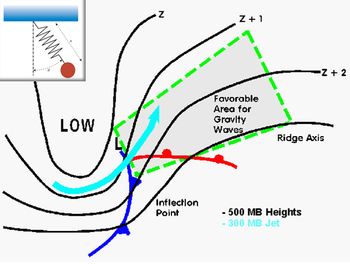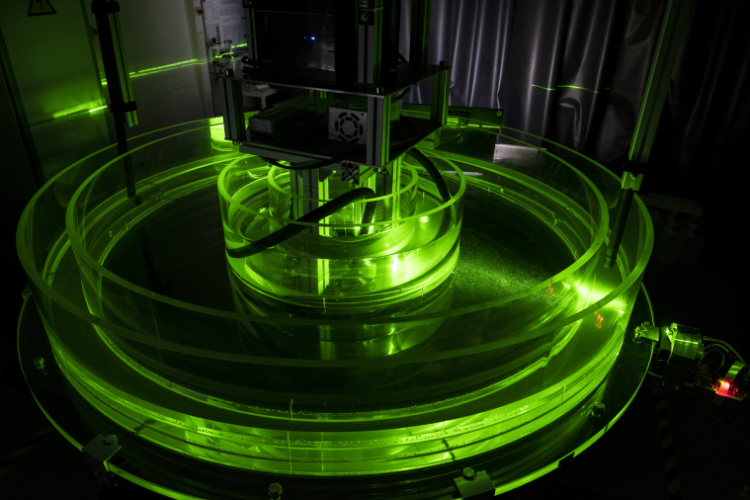Spontaneous Imbalance (SI)

PIs:
Uwe Harlander, Brandenburg Technische Universität, Cottbus-Senftenberg (BTU)
Ulrich Achatz, Goethe Universität Frankfurt, Frankfurt/Main (GUF)
Christoph Zülicke, Leibniz-Institut für Atmosphärenphysik, Kühlungsborn (IAP)
Illia Horenko, Universita della Svizzera Italiana, Lugano, Switzerland (USI)
Postdocs and PhD students:
Elena Gagarina (GUF), Lena Schoon (IAP), Fabienne Schmid (GUF), Costanza Rodda (BTU), Ion Borcia (BTU); Olga Kaiser (USI); Joran Rolland (GUF), Steffen Hien (GUF)
Summary
Gravity waves (GWs), spatially often too small to be resolved by present day weather and climate models, need to be parameterized since they have a profound effect on the large scales. While several flow-dependent parameterizations for the radiation of GWs from orographic and convective sources do exist, the situation is less developed for waves emitted from large-scale baroclinic flows. This source of GWs is related to spontaneous imbalance (SI), i.e. the spontaneous breakdown of balance in a supposed quasi-geostrophic flow that in consequence radiates GWs. Studying spontaneous GW emission and validating parameterization schemes is challenging due to the fact that GWs will always be embedded in the complex frontal flow with a large number of interacting processes. Therefore, we combine theory and numerical modelling with complementary laboratory experiments. The latter guarantee the full repeatability of the large-scale flow situation under consideration. The direct correspondence between experimental and model data and the data reproducibility makes the lab experiment a powerful testing environment for parameterizations and climate related processes. The differentially heated rotating annulus experiment, built and conducted at BTU (Brandenburg Technische Universität Cottbus-Senftenberg) provides the necessary reference data for benchmarks of model simulations at GU-F (Goethe Universität Frankfurt) and IAP (Leibniz Institute for Atmospheric Physics, Kühlungsborn). We will focus on experimentally delineating preferred conditions for the occurrence of SI and relevant background flow properties for the atmosphere-like big tank. Complementary, an efficient description of GW variability and the related spontaneous emission process will be developed by GU-F and IAP, using idealized simulations. Core issue here is the identification of a useful relationship between the large-scale flow and the source of meso-scale GWs, and the validation of this approach in self-consistent coarse-resolution ray-tracing simulations. The goal is to construct a resolution-dependent SI parameterization. This source parameterization identified from model data will be validated against the annulus experiment at BTU. This will be accompanied by an analysis of UA-ICON simulations with high and low resolution. Finally, the parameterized GWs will be coupled to the ray-tracing GW model MS-GWaM in UA-ICON.


